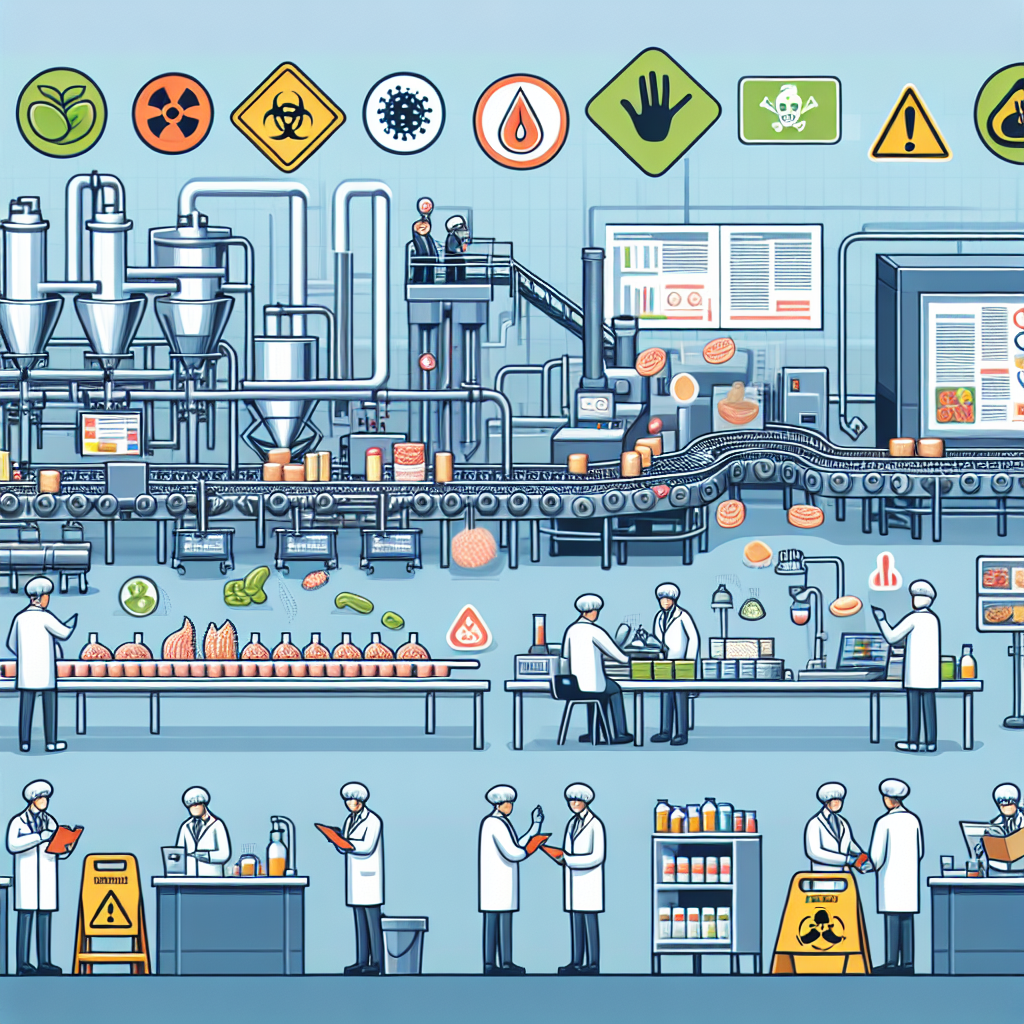Discover insightful case studies showcasing the successful implementation of Hazard Analysis Critical Control Points (HACCP) in food processing industries, ensuring food safety and quality.
Introduction to HACCP
Hazard Analysis and Critical Control Points (HACCP) is a preventative food safety system designed to identify, evaluate, and control hazards that pose a threat to the safety of food products. This management system is essential in the food processing industry as it helps companies produce safe food products for consumers and comply with regulatory requirements.
Throughout this article, we delve into detailed case studies to explore the successful implementation of HACPP in various food processing environments, highlighting each step of the process.
Case Study 1: Dairy Processing Plant
The challenge at a dairy processing plant was to ensure the safety of its milk products while meeting the strict regulations imposed by food safety authorities. The implementation of HACCP was pivotal in transforming their quality assurance processes.
- Step 1: Assemble the HACCP Team: The company formed a team of experts from various departments including processing, quality assurance, and engineering.
- Step 2: Describe the Product and Its Distribution: Detailed descriptions of the processed milk products and the distribution methods were created to identify where hazards might occur.
- Step 3: Construct Flow Diagrams: Flow diagrams were developed for each product line to provide a visual representation of the processing steps.
- Step 4: Conduct a Hazard Analysis: The team identified potential biological, chemical, and physical hazards. They determined that pathogen contamination and allergen cross-contact were significant hazards.
- Step 5: Determine Critical Control Points (CCPs): CCPs identified included pasteurization and packaging. Controls were established to monitor temperatures and sealing integrity.
- Step 6: Establish Critical Limits: They set precise critical limits such as heating milk to 161 degrees Fahrenheit for 15 seconds.
- Step 7: Monitor Control Measures: Continuous monitoring procedures were implemented to ensure critical limits were consistently met.
- Step 8: Implement Corrective Actions: Protocols were developed for handling deviations, like reprocessing or disposing of non-compliant products.
- Step 9: Verify the System’s Effectiveness: Regular audits and testing verified that the HACCP system was functioning as intended.
- Step 10: Document Everything: Comprehensive documentation and record-keeping practices were established to provide evidence of compliance and facilitate continuous improvement.
Case Study 2: Frozen Foods Manufacturer
A leading manufacturer of frozen foods faced the challenge of managing a wide range of raw materials and extensive processing requirements. Implementing HACCP was crucial for ensuring product safety and consistency.
- Step 1: HACCP Team Formation: A diverse team was formed including staff from production, quality control, and supply chain management.
- Step 2: Product and Distribution Details: Products such as frozen pizzas and vegetables were described in detail with their expected storage conditions and distribution.
- Step 3: Create Process Flow Diagrams: Flow diagrams were drafted for each product type, detailing every processing step from raw material acceptance to final shipment.
- Step 4: Hazard Analysis: Identified hazards included foreign objects (e.g., metal fragments) and microbiological concerns.
- Step 5: Identify CCPs: Critical Control Points were determined such as product freezing and sorting by metal detectors.
- Step 6: Set Critical Limits: Critical limits were defined, such as minimum freezing temperatures and detector sensitivity settings.
- Step 7: Establish Monitoring Procedures: Monitoring systems were set up to oversee critical limits at CCPs continuously.
- Step 8: Implement Corrective Measures: Actions for deviations included re-sorting or discarding affected batches.
- Step 9: Verification Activities: Ongoing verification included sensor checks and routine CCP audits to ensure the controls were effective.
- Step 10: Documentation: All procedures and records were systematically documented and maintained.
Case Study 3: Seafood Processing Facility
In a seafood processing facility, the primary concern was managing biological hazards, particularly pathogens like Listeria and Vibrio that are common in marine environments. Effective implementation of HACCP was critical for this facility to ensure safe seafood products.
- Step 1: Establish HACCP Team: The team included seafood safety experts and experienced plant personnel.
- Step 2: Define Product and Distribution: They specified all seafood products including details like harvest locations and storage temperatures during transport.
- step 3: Develop Process Flow Diagrams: Diagrams illustrated every step of processing from receipt of raw seafood to final packaging.
- Step 4: Perform Hazard Analysis: The hazard analysis focused on identifying biological contaminants that could proliferaconveyed through seafood.
- Step 5: Determine CCPs: Critical points included chilling, depuration, and final inspection processes.
- Step 6: Establish Critical Limits: Limits were specified like minimum chilling times and temperatures to prevent pathogen growth.
- Step 7: Set up Monitoring Procedures: Regular monitoring ensured that seafood was maintained at safe temperatures throughout the process.
- Step 8: Establish Corrective Actions: In case of non-compliance, contaminated batches were either reprocessed or discarded based on the severity.
- Step 9: Conduct Verification: Validation techniques included random sampling and microbiological analysis.
- Step 10: Maintain Documentation: Detailed records were maintained for audit purposes and regulatory compliance.
In each of these case studies, the successful implementation of HACCP significantly enhanced the safety and quality compliance of the food products. By analyzing the specific implementations across different food processing environments, it becomes evident that a structured and thorough approach to HACCP not only helps in meeting regulatory requirements but also instills a culture of continuous improvement in food safety management.
The HACCP system, with its focus on critical control points and proactive hazard management, forms the backbone of effective food safety protocols in the food processing industry.
